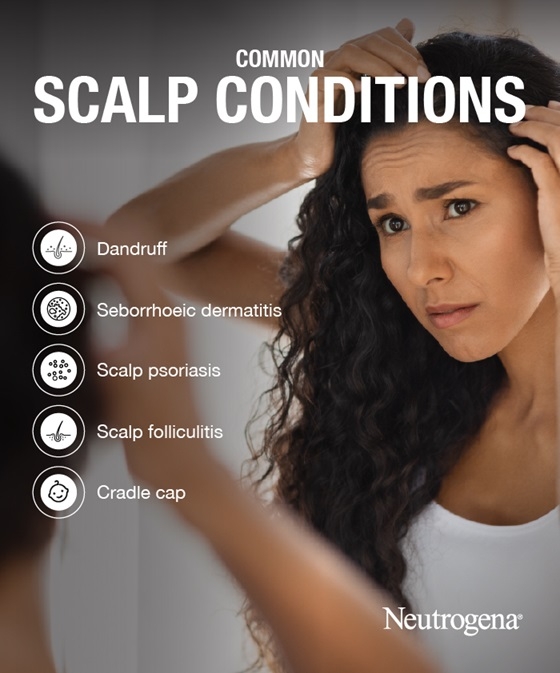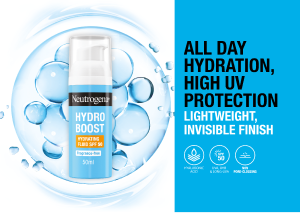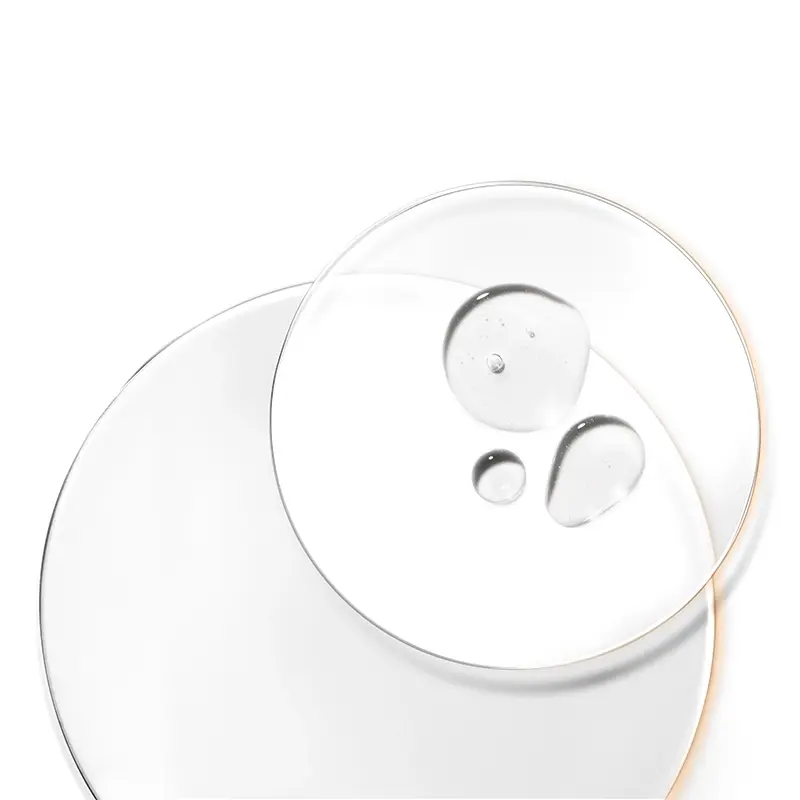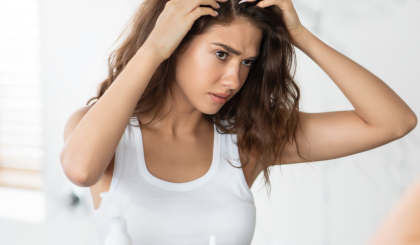When shopping for shampoo, you might head straight for products based on what they do to your hair and completely forget about your scalp. However, the skin on your scalp needs attention just like the skin on the rest of your body, especially if you suffer from a scalp condition.
Various scalp conditions can cause itchiness or irritation. So, it’s a good idea to get to the bottom of what’s causing it, so you can start treating your scalp correctly.
Here, we’ll guide you through some common scalp conditions, as well as providing advice on how to spot the first signs and, importantly, how to deal with them.
In this guide:

Dandruff
Dandruff is the build-up of dead skin cells on the scalp that break off in large, visible flakes. The symptoms of dandruff typically include flaking, dryness, and itchiness. While dandruff can be visible and a little frustrating when it falls onto your clothing, it’s a very common condition and nothing to be ashamed of. It’s also completely harmless and cannot be passed from one person to another.
What causes dandruff?
In much the same way as the rest of your skin, healthy scalps continually shed dead skin cells. When the delicate rhythm of skin renewal on the scalp is upset, too many skin cells are produced too quickly.
There are many different reasons your scalp could be flaking. Some potential causes or triggers could be:
Eczema or seborrhoeic dermatitis
A fungal infection
A reaction to products you’ve used
Stress
Cold weather.
If you’re concerned, you can visit a pharmacist or your GP. It’s important to note that dandruff isn’t caused by poor hygiene, but not washing your hair regularly may make it more obvious.
How to get rid of dandruff
There is no ‘cure’ for dandruff. Fortunately, however, you can control most symptoms with anti-dandruff shampoos.
These shampoos work in different ways, such as by:
Slowing down the process - Medicated shampoos with coal tar can help slow the overproduction of skin cells on the scalp and have antipruritic properties, which means they can relieve itching
Clearing scalp build-up - Shampoos with salicylic acid help break down dead skin build-up and split flakes into smaller, less visible pieces that can be washed away easily
Taking anti-fungal action - Shampoos that include Zinc Pyrithione and Ketoconazole have anti-fungal properties, which can help you to manage dandruff.
Find out more about how you can get rid of dandruff here.
Seborrhoeic dermatitis
Seborrhoeic dermatitis is a common form of eczema that usually affects the scalp, though it can affect other parts of the body as well. It can also occur in areas such as your face, eyebrows, eyelashes, and chest.
Seborrhoeic dermatitis is thought to affect around 4% of the adult population. Symptoms include reddened, irritated skin and large flakes. The scalp may also be oily, causing flakes to have a yellowish tinge.
What causes seborrhoeic dermatitis on your scalp?
Although seborrhoeic dermatitis affects the areas of skin with oil glands and can lead to greasy-looking scales, greasy skin is not the cause. As with other forms of eczema, the skin of people with seborrhoeic dermatitis is typically dry.
The condition is believed to be due to an inflammatory reaction that the body has to an overgrowth of Malassezia yeasts (Pityrosporum ovale), which are normal microorganisms that reside on the skin surface. However, for some people, this will trigger seborrhoeic dermatitis. This reaction can be further aggravated and triggered by stress, tiredness, sickness, weather changes, and health problems.
Seborrhoeic dermatitis treatments
Like dandruff, seborrhoeic dermatitis has no known ‘cure’. However, medicated shampoos can help control the symptoms. Some ingredients that may help manage your symptoms include:
Coal tar
Ketoconazole
Selenium sulphide.
Everyone’s skin reacts differently to products, so it’s a good idea to speak to your pharmacist or doctor beforehand for their recommendations.
https://eczema.org/information-and-advice/types-of-eczema/seborrhoeic-dermatitis-in-adults
Scalp psoriasis
Scalp psoriasis happens when the body produces too many skin cells. Because of this, there’s not enough time for older cells to rise to the surface and shed naturally, so the dead skin cells build up, resulting in thick and scale-like skin patches, which can cause soreness and itchiness.
The severity of psoriasis on the scalp can vary from slight scaling to thick, crusted plaques. Scalp psoriasis may look similar to seborrhoeic dermatitis, but there are differences. While seborrhoeic dermatitis scales usually appear yellowish and greasy, psoriasis scales generally appear powdery with a silvery sheen. Like seborrhoeic dermatitis, psoriasis can also appear on different parts of the body.
Scalp psoriasis symptoms can include:
Flaky skin
Itchiness
Tightness
Temporary hair thinning (in rare cases).
What causes scalp psoriasis?
Scalp psoriasis is caused by an overactive immune system, which triggers inflammation and cells to form at an increased rate. All this extra skin then forms dry, itchy, and sore patches.
Some causes or triggers of psoriasis include:
Stress
Genetics – sufferers may not be ‘closely’ related – for example, the condition may skip a generation
Damage to the skin – for example, cuts or surgery
Throat infections
Some medications – including antibiotics and blood pressure medication.
What is a psoriasis treatment for the scalp?
There is no ‘cure’ for scalp psoriasis, however it’s not always a constant condition. Many people find that they will experience psoriasis in the form of flare-ups, meaning it can come and go at different times. Even so, you may still want to find a treatment to ease your symptoms when it does occur.
Always ask a healthcare professional for advice when treating scalp psoriasis. Doctors and pharmacists often recommend shampoos, creams, and oils containing ingredients such as:
Coal tar
Salicylic acid
Steroids
Vitamin D
Dithranol
Moisturising oils.
Folliculitis in the scalp
Folliculitis means inflammation of the hair follicles. It can occur anywhere on hair-bearing skin, including the scalp.
Folliculitis initially causes small, red bumps that look similar to an acne breakout. Over time, it may spread to other follicles and the bumps may get larger and more inflamed.
While it can affect any part of your scalp, it often begins along your hairline.
Other signs and symptoms of scalp folliculitis include:
Clusters of tiny, red bumps on your scalp that may have a white tip.
Blisters with yellowish-brown scabs or that ooze pus.
Itching, burning, or stinging sensation.
Pain or tenderness.
What causes folliculitis?
Folliculitis happens when bacteria, usually staphylococcus (or staph), builds up in your hair follicles and causes an infection. As it’s a follicle-based condition, you will typically find this in places where you commonly have more hair – such as your scalp, thighs, or armpits.
Some common irritants of folliculitis include:
Fungal infections
Ingrown hairs – commonly caused by hair removal
Product blockages in follicles
Bacteria
Some anti-inflammatory medications.
Folliculitis treatments
Commonly, folliculitis clears up on its own without the need for treatment. However, if your symptoms are particularly problematic, there are things you can do that may help soothe your skin. These include:
Cleaning the affected area twice a day. Be gentle and use antibacterial soap and clean cloths.
Using over-the-counter topical treatments. Your pharmacist or doctor may recommend antibacterial products, such as medicated washes or creams.
Using anti-fungal creams or shampoos. Your doctor may prescribe these to you if your folliculitis is caused by fungus.
Avoiding hair removal until your skin is healthy again. Shaving and waxing will only irritate the infection further – as will scratching and wearing tight clothing.
Cradle cap in infants
Cradle cap, also known as seborrhoeic eczema, is a type of seborrhoeic dermatitis. It can affect infants under three months old and usually goes away on its own in six to 12 months. As well as the scalp, it can appear in a baby’s eyebrows, forehead, neck, and behind their ears.
It typically presents as thick, greasy scales and is not usually anything to worry about. It’s not contagious or itchy and often gets better by itself.
What causes cradle cap?
Doctors have yet to pinpoint exactly what causes cradle cap, but it’s thought to be due to overactive sebaceous glands. This hyperactivity usually happens as the glands are developing and getting used to shifting levels of hormones after birth – which is why it doesn’t tend to last very long.
How to treat cradle cap
Cradle cap often clears up by itself after a few weeks or months. However, should you feel that your baby has begun to itch, the condition is not clearing, or they’ve developed other symptoms, it’s a good idea to speak to your health visitor or doctor.
They might prescribe you a medicated shampoo or emollient, or simply recommend:
Using a gentle baby shampoo and tepid water to wash their scalp every day. If you think your baby has eczema, using shampoo is not recommended.
Gently massaging the scalp – be careful not to rub
Trying to loosen the scales with a gentle brush.
How to help relieve an itchy or irritated scalp with NEUTROGENA® shampoos
For those with dandruff, there are anti-dandruff shampoos within the NEUTROGENA® T/Gel® daily range suitable for different hair and scalp types. You can choose from our anti-dandruff shampoo for oily hair and scalp, or for dry hair. Alternatively, for sensitive scalp, try our 2-in-1 antidandruff shampoo & conditioner.
If you‘re suffering from seborrhoeic dermatitis, scalp psoriasis, or more severe dandruff, then you can try NEUTROGENA® T/Gel® Therapeutic Shampoo which treats an itchy, flaky scalp whilst leaving hair manageable and shiny*
NEUTROGENA® T/Gel® Therapeutic Shampoo is a medicine. Contains Neutar™ solubilised coal tar extract 20 mg/ml for the treatment of seborrhoeic dermatitis of the scalp, scalp psoriasis and dandruff. Always read the label. Product should be used two to three times weekly. Treatment usually lasts for 6 weeks. Longer periods of treatment should only take place under the supervision of a doctor.






